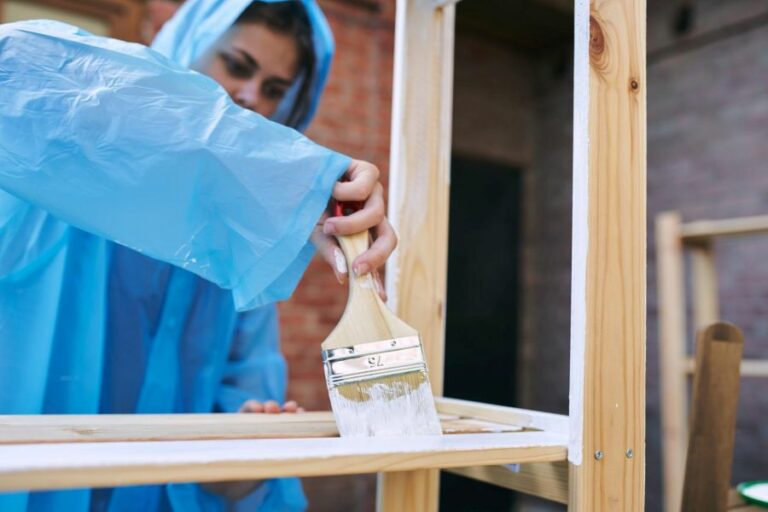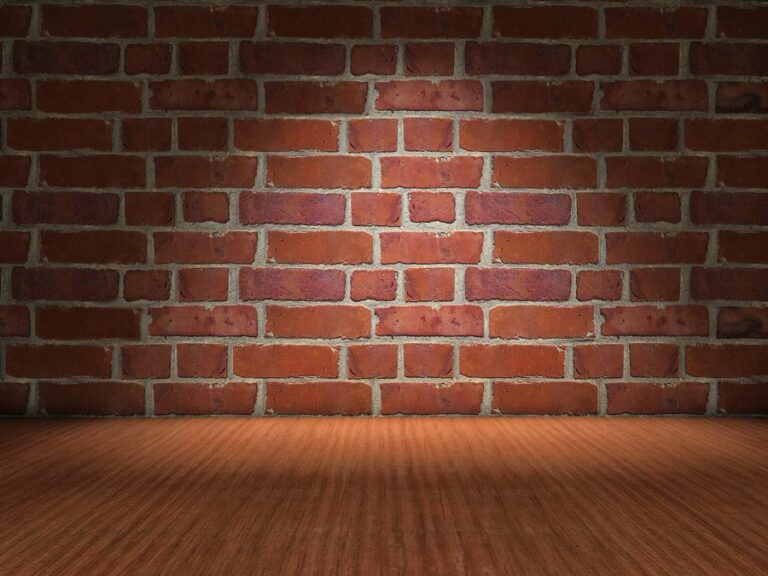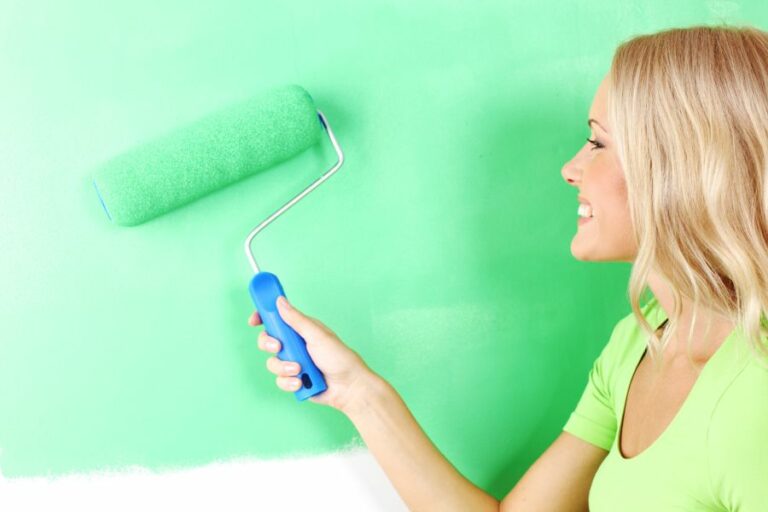Outdoor Fabric Paint, 25 Things You Should Know
Are you tired of your outdoor furniture looking faded and lackluster? Transform your yard into an inviting oasis with outdoor fabric paint! I’ll show you how to upgrade your cushions, umbrellas, and more without breaking the bank. From choosing the right paint to step-by-step application techniques, I’ll guide you through everything you need to know to make your outdoor space look fresh and fabulous.
Outdoor fabric paint:
Outdoor fabric paint is a versatile solution for revitalizing outdoor furnishings and accessories. Available in acrylic, spray, and chalk forms, each type offers unique properties suitable for different materials and application methods. To achieve the best results, ensure the fabric is clean, dry, and prepared, then use appropriate tools for applying the paint. Afterward, protect the painted surface from UV damage and clean it gently when needed. Proper execution will yield long-lasting, refreshed, and inviting outdoor spaces.

Discover the secret to stunning outdoor fabric transformations as we dive into the world of outdoor fabric paint! Learn about different paint options, application techniques, and care instructions to revive and customize your outdoor textile projects with style and durability.
Contents
- 1 Exterior Fabric Paint for Outdoor Use
- 2 Which Type of Paint is Suitable for Outdoor Fabric Applications?
- 3 Does Outdoor Fabric Paint Exhibit Waterproof Properties?
- 4 Is Outdoor Paint Suitable for Use on Fabric Materials?
- 5 Does a Fabric Paint Exist that is Resistant to Washing Off?
Exterior Fabric Paint for Outdoor Use
Outdoor fabric paint is a versatile and practical way to give new life to worn or outdated outdoor furnishings and accessories. This guide will explore the different types of outdoor fabric paint available, their best uses, application methods, and helpful tips to ensure a successful, long-lasting result.
• Types of Outdoor Fabric Paint
There are several types of outdoor fabric paint available, each with unique characteristics and benefits. Here are some of the most popular types:
– Acrylic Fabric Paint
Acrylic fabric paint is a water-based paint that is easy to work with and cleans up effortlessly. It is specially formulated for use on fabric, and it provides excellent adhesion, flexibility, and durability. Acrylic fabric paint is perfect for both indoor and outdoor use and resists fading, cracking, and peeling.
– Spray Fabric Paint
Spray fabric paint provides the convenience of a spray can with the durability of fabric paint. The fine mist created by the spray nozzle ensures even coverage and prevents paint runs. Spray fabric paint is ideal for large projects, such as painting outdoor furniture cushions or umbrellas, as it can quickly cover large areas.
– Chalk Paint for Fabric
Chalk paint is a popular choice for transforming furniture, and it can also be used on fabric. The unique properties of chalk paint allow it to bond to various surfaces, including fabric, without the need for primers or sealers. Chalk paint creates a vintage, distressed look that is also functional and durable.
• Choosing the Right Outdoor Fabric Paint
To determine the best outdoor fabric paint for your project, consider the following factors:
- Material: Examine the type of fabric, whether it’s canvas or synthetic material, that you are working with. Some outdoor fabric paints may work better on specific materials.
- Application Method: Decide whether you prefer to use a brush, sponge, or spray can for your project. This preference will significantly affect the type of paint you choose.
- Opacity: If you’re painting a light color over a dark fabric or looking to make a bold statement with your color, consider selecting high-opacity paint. This will ensure satisfactory coverage and prevent any show-through of the underlying fabric or previous color.
• Preparing Your Fabric
Before applying outdoor fabric paint, it’s essential to ensure your fabric is clean, free of any dirt, and dry. Remove any cushions or padding from the furniture and set it aside. Clean the fabric with a mild soap and water solution, rinse thoroughly, and allow it to dry completely.
If there are any loose threads or frayed edges, trim them carefully with scissors. It’s also important to note that some fabrics may need to be primed before painting. For example, if you’re using chalk paint on a synthetic fabric, you may need to apply a fabric medium first to ensure proper adhesion.
• Application Techniques
The method of application will depend on the type of outdoor fabric paint you have chosen, but the following tips will help you achieve the best possible results:
- Brushes: When using brushes, work with a fabric-specific brush for smooth, even coverage. Load the brush and apply paint using long, even strokes in one direction. Allow the paint to dry, and apply a second coat if necessary.
- Sponges: Sponges can be an excellent tool for applying paint in small, detailed areas or for creating specific textures. Dip the sponge in paint, remove any excess, and dab it onto the fabric. This technique is particularly useful when working with stencils.
- Spray Paint: When using spray fabric paint, work in a well-ventilated area and cover any surrounding surfaces to protect them from overspray. Hold the spray can about 12 inches away from the fabric and apply using a sweeping motion. Allow each coat to dry before applying another for the best coverage and durability.
• Caring for Your Painted Fabric
Once your project is complete and the paint has dried, there are a few key steps to ensure your newly painted fabric remains looking fresh and vibrant:
- Curing: Depending on the type of paint used, you may need to heat set or cure the paint according to the manufacturer’s instructions. This step ensures that the paint is durable and will not wash away.
- Protecting: Consider applying a UV-resistant spray to protect your painted fabric from fading due to sun exposure. A fabric protector spray can help to repel water and stains, keeping your painted project looking new.
- Cleaning: When your painted fabric requires cleaning, use a gentle soap and water solution, avoiding harsh chemicals or abrasives that could damage the paint.
In conclusion, outdoor fabric paint is a fantastic way to breathe new life into your outdoor furnishings and accessories.
By selecting the right type of paint, preparing the fabric, and using proper application techniques, you can create beautiful, long-lasting results that will leave your outdoor space looking refreshed and inviting for years to come.
Which Type of Paint is Suitable for Outdoor Fabric Applications?
Outdoor fabric, whether for furniture cushions, awnings, or other decorative items, faces unique challenges.
Exposure to sunlight, rain, and other elements can cause fading and deterioration over time. Fortunately, there are several different types of paint specifically designed for use on outdoor fabrics, which can help protect and refresh your textiles while adding a personal touch through color and design.
• Choosing the Right Paint for Outdoor Fabric
When selecting paint for your outdoor fabric projects, consider the following qualities:
- Weather resistance: The paint should be able to withstand harsh weather conditions such as sunlight, rain, and snow without fading or peeling.
- Flexibility: As fabric bends and folds, the paint should move with it to avoid cracking or flaking.
- Colorfastness: The paint should provide vibrant, long-lasting color that resists fading or bleeding.
Keeping the above qualities in mind, there are three main types of paint that work well for outdoor fabric projects: acrylic, fabric, and spray paints. Below, we provide a detailed breakdown of each paint type, along with the best brands and application methods for optimal results.
• Acrylic Paints
Acrylic paints are water-based, making them easy to clean up and environmentally friendly. They are known for their durability, flexibility, and ability to adhere well to various surfaces, including textiles.
Many acrylic paints are specifically formulated for use on outdoor fabrics and offer excellent resistance to weather, fading, and mildew.
– Recommended Brands
- Golden Artist Colors: This high-quality acrylic paint brand offers excellent colorfastness, durability, and flexibility for outdoor fabric applications. Consider their Heavy Body Acrylics or Fluid Acrylics lines for a choice of consistency.
- Liquitex Professional: With their Soft Body Acrylics and Heavy Body Acrylics lines, Liquitex offers high-quality paints ideal for outdoor fabric projects. These paints are known for their vibrant colors, durability, and resistance to fading.
– Application Tips
When using acrylic paint on outdoor fabric, follow these guidelines:
- Ensure the fabric is clean and dry prior to painting.
- Apply a fabric medium to the paint to increase flexibility and reduce the stiffness of the dried paint.
- Use a brush or sponge to apply the paint in thin layers, allowing each layer to dry fully before adding the next.
- Seal the painted fabric with a clear, water-based sealer for added protection against the elements.
• Fabric Paints
As the name suggests, fabric paints are specifically designed for use in textiles. These paints typically have a higher elasticity than other paint types, allowing them to withstand the movement and stretching of fabrics better.
Additionally, fabric paints are often formulated with UV resistance and weatherproofing properties to enhance outdoor textiles’ protection.
– Recommended Brands
- DecoArt SoSoft: This brand offers a range of high-quality fabric paints suitable for outdoor use. Their SoSoft line provides excellent colorfastness, flexibility, and weather resistance.
- Tulip ColorShot: These fabric paints come in spray form, making them ideal for quick, even coverage on large fabric surfaces. The ColorShot Outdoor Upholstery Spray line is specifically designed for outdoor fabric applications, offering excellent UV and weather resistance.
– Application Tips
To achieve the best results with fabric paints:
- Pre-wash the fabric to remove any sizing, and allow it to dry completely.
- Apply paint using a brush, sponge, or stencil, depending on your desired design.
- Heat-set the paint, if required, by following the manufacturer’s instructions. This step is important for ensuring colorfastness and durability.
• Spray Paints for Outdoor Fabric
Spray paints provide a convenient method for applying paint to large surfaces quickly and evenly. It is important to select spray paints specifically designed for outdoor fabric use, as these will provide the necessary durability, flexibility, and weather resistance.
– Recommended Brands
- Rust-Oleum: Known for their robust protective coatings, Rust-Oleum offers a line of spray paints specifically designed for outdoor fabric use. The NeverWet Outdoor Fabric Spray provides excellent protection against water, stains, and fading.
- Simply Spray: This brand offers a range of fabric spray paints suitable for outdoor use. The Upholstery Fabric Paint line is specifically designed for use on outdoor cushions, chairs, and other fabric items, providing excellent colorfastness, durability, and weather resistance.
– Application Tips
When using spray paint on outdoor fabric:
- Ensure the fabric is clean, dry, and free of any loose threads or debris.
- Protect any areas of the fabric that you do not wish to paint using masking tape or a drop cloth.
- Apply the spray paint in light, even layers, holding the can approximately 6 to 8 inches from the fabric surface. Allow each layer to dry before adding the next.
- Follow the manufacturer’s recommended drying time, typically between 24 and 72 hours, before using the painted fabric.
In conclusion, acrylic, fabric, and spray paints, when properly selected and applied, can effectively refresh and protect your outdoor fabric projects.
By choosing the most suitable type and brand of paint, along with following the recommended application tips, you can ensure your outdoor textiles remain vibrant and protected against the elements for years to come.
Does Outdoor Fabric Paint Exhibit Waterproof Properties?
Fabric paint has long been a popular choice for transforming textiles, home decor, and outdoor furniture, allowing DIY enthusiasts to create beautifully customized pieces.
One crucial question when it comes to using fabric paint on outdoor projects is whether the coating will be waterproof, ensuring the durability and longevity of the painted item.
• Types of Outdoor Fabric Paint
There are several types of fabric paint available on the market, each with its specific features and uses. Understanding the various paint types is crucial for choosing the right product for your outdoor project.
– Acrylic Fabric Paint
Acrylic fabric paint is the most common type of outdoor fabric paint. It is water-based and offers exceptional durability and a wide range of colors. When properly applied and cured, acrylic fabric paint offers excellent water resistance, making it suitable for outdoor furnishings and textiles.
– Spray Fabric Paint
Spray fabric paint is another popular choice for outdoor projects. This type of paint is specifically formulated for use in a spray can, allowing for easy and even application on various surfaces, including furniture, cushions, and umbrellas.
Like acrylic paint, spray fabric paint is water-resistant when properly applied and cured.
– Fabric Dye
While not technically paint, fabric dye is often used for outdoor projects, especially when the goal is to change the color of an entire piece or when working with a large fabric surface. Fabric dye offers excellent water resistance, but it’s essential to choose a dye explicitly formulated for outdoor use.
• Key Factors to Consider When Choosing Outdoor Fabric Paint
When selecting the best outdoor fabric paint, it’s essential to keep a few crucial factors in mind. These considerations will help you choose a product that ensures the longevity and appearance of your painted fabric.
– UV Resistance
One of the essential features of outdoor fabric paint is its resistance to ultraviolet (UV) rays. Sun exposure can cause fading or discoloration, so it’s crucial to use paint with built-in UV inhibitors. This will prevent the colors from fading over time and extend the life of your painted fabric.
– Water Resistance
As mentioned earlier, water resistance is a vital factor in determining the suitability of outdoor fabric paint. Considering this, ensure to choose a paint marketed for outdoor use or explicitly labeled as water-resistant or waterproof.
• Proper Application Techniques for Outdoor Fabric Paint
Achieving the desired level of waterproofing involves more than the choice of paint. The proper application of outdoor fabric paint is equally vital. Follow these steps to ensure a durable and waterproof finish:
- Clean the fabric: Begin by thoroughly cleaning the fabric, removing any dirt, dust, or debris that might interfere with the paint’s adhesion. For best results, follow the manufacturer’s recommendations for cleaning and allow the fabric to dry completely.
- Prime the surface (if necessary): Some outdoor fabric paints require the use of a primer. If you are working with a paint that requires priming, apply the primer according to the manufacturer’s instructions.
- Apply the paint: Carefully follow the instructions outlined on the specific outdoor fabric paint you are using. This may involve brushing or spraying the paint on the fabric, using a thin and even coat. Be patient and allow each coat to dry accordingly before applying additional layers.
- Cure the paint: Most outdoor fabric paints need to ‘cure’ before they become water-resistant. Curing times vary between products, so make sure to follow the manufacturer’s instructions. Generally, curing involves letting the paint dry for a specific amount of time, sometimes up to 72 hours.
- Test for water resistance: Once the paint has fully cured, you can test its water resistance by briefly spraying or sprinkling water onto the surface. If the water beads up and rolls off, the fabric paint is water-resistant.
• Final Thoughts
To answer the initial question – yes, outdoor fabric paint can be waterproof when you choose the appropriate product and follow the correct application and curing process.
By selecting a high-quality outdoor fabric paint with UV and water resistance features and applying it correctly, you can create vibrant, personalized pieces that withstand the elements and enrich your outdoor living space.
Remember that your choice in paint and careful application will determine the final result’s durability and water resistance. With patience, attentiveness, and the right product, you can turn ordinary outdoor fabric items into waterproof and eye-catching pieces that last for years to come.
Is Outdoor Paint Suitable for Use on Fabric Materials?
Painting fabric is a popular DIY project among crafters and artists. Choosing the right paint is crucial for achieving a long-lasting and vibrant result. One question that arises frequently is whether outdoor paint can be used on fabric.
• Understanding Outdoor Paint
Before delving into the usability of outdoor paint on fabric, it is important to understand what outdoor paint is. Outdoor paint is specially formulated to withstand various weather conditions, including UV rays, rain, humidity, and temperature variations.
It is designed to be durable, fade-resistant, and waterproof, making it ideal for surfaces such as wood, metal, and masonry.
– Acrylic vs. Latex Outdoor Paint
There are two primary types of outdoor paint: acrylic and latex. Despite having a few similarities, such as being water-based and quick-drying, there are differences between the two, which may impact their suitability for fabric projects.
Acrylic Outdoor Paint
Acrylic paint is made of pigment suspended in an acrylic polymer emulsion. It is highly versatile and can be used on a wide range of surfaces, including fabric. When it comes to outdoor paint, acrylic varieties are typically more resistant to UV rays, water, and weather conditions.
Latex Outdoor Paint
Latex paint is made of pigment and binder suspended in water. The binder is typically made from synthetic materials, such as acrylic, vinyl, and styrene. Compared to acrylic paint, latex paint is more elastic and can expand and contract without cracking.
However, it may not be as UV-resistant as acrylic paint.
• Factors to Consider when Using Outdoor Paint on Fabric
– Flexibility
Comfort is an essential factor when painting fabric, especially for wearable items such as clothing, bags, or shoes. Outdoor paints, especially latex, tend to be less flexible than fabric-specific paints, which could make the final product stiff and uncomfortable.
– Permanence
One advantage of using outdoor paint on fabric is its durability. The water-resistant and UV-resistant properties enable the paint to withstand various weather conditions and make it less likely to fade or wash away. However, latex paint may be less durable than acrylic paint when used on fabric.
– Adhesion
Some outdoor paints, particularly acrylic varieties, can adhere well to fabric. However, they may not be formulated specifically for fabric surfaces, which could result in cracking, peeling, or uneven coverage. Using a fabric medium can improve adhesion and achieve better results.
• Preparing Fabric for Painting
To get the best results when using outdoor paint on fabric, proper preparation is essential.
– Prewash the Fabric
Washing the fabric before painting helps remove any sizing or oils that may prevent the paint from adhering properly. Use mild detergent and avoid using fabric softeners, as they can leave residue behind.
– Test the Paint
Always perform a test on a small, inconspicuous area of the fabric to ensure compatibility and desired results. Allow the test area to dry fully before assessing the final result.
– Use a Fabric Medium
A fabric medium is a substance that can be mixed with outdoor paint to make it more suitable for fabric applications. It increases the paint’s flexibility, improves adhesion, and helps prevent bleeding. Some fabric mediums also help the paint withstand washing and maintain its vibrancy.
• Painting Techniques to Achieve the Best Results
When painting on fabric with outdoor paint, there are several techniques you can implement to ensure success.
– Thin Layers and Multiple Coats
Applying multiple thin layers of paint, rather than a single thick coat, can help prevent cracking and ensure proper adhesion. Allow each layer to dry before applying the next.
– Use the Right Tools
Selecting the appropriate brushes, rollers, or sponges for your project can greatly impact the final result. Invest in high-quality tools designed for painting on fabric.
– Heat-Set the Paint
Heat-setting the paint is a process that involves applying heat to the painted fabric to ensure the paint properly bonds to the fabric. You can use an iron or a clothes dryer for this step but always follow the paint and fabric medium instructions for the recommended heat-setting method and temperature.
• Final Thoughts
While outdoor paint, particularly acrylic varieties, can be used on fabric, it may not be the most suitable option due to its potential lack of flexibility and adhesion.
Using a fabric medium can improve the paint’s performance on fabric surfaces, but it is essential to test the paint on the fabric before committing to a project. Proper preparation and painting techniques can also greatly influence the final result.
For those with little experience in fabric painting, investing in fabric-specific paint may be a safer and more reliable choice.
Does a Fabric Paint Exist that is Resistant to Washing Off?
In the world of arts and crafts, fabric paint has become an essential tool for transforming ordinary cloth items into personalized and unique creations.
However, one common concern among fabric paint enthusiasts is whether there are fabric paints available that don’t wash off, ensuring the durability and longevity of their creative designs.
• Types of Fabric Paints
There are various types of fabric paint on the market, each with its own benefits and drawbacks. Some popular categories of fabric paints include:
– Acrylic Fabric Paint
Acrylic fabric paint is a popular choice due to its affordability, relatively easy application, and wide range of colors available. Typically, acrylic fabric paint does not wash off easily; however, it may require a heat setting to ensure its durability on fabrics.
– Fabric Spray Paint
Fabric spray paint is another type of fabric paint that comes in aerosol cans, allowing for quick and easy application to large areas or intricate stencils. This type of paint generally adheres well, but may require multiple coats for maximum staying power.
– 3D Fabric Paint
3D fabric paint, also known as puff paint or dimensional fabric paint, creates raised textures and designs on fabric surfaces. This distinct feature makes it less susceptible to washing off when properly applied and heat-set.
– Fabric Markers
Fabric markers are a convenient and mess-free alternative to liquid paints, but they generally do not provide as much staying power as other fabric paint options. Nonetheless, high-quality fabric markers can offer satisfactory results on certain types of fabric.
• Factors Affecting Fabric Paint Staying Power
While some fabric paints claim to be resistant to washing, several factors can affect their staying power:
– Fabric Type
The type of fabric you’re working with can significantly impact how well the paint adheres and whether it will wash off over time. Natural fabrics such as cotton, canvas, and linen tend to absorb paint more effectively, ensuring a better bond between the paint and the fibers.
On the other hand, synthetic materials like polyester may be more challenging for certain paints to adhere to.
– Application Technique
How you apply the fabric paint can also affect its durability. Using an appropriate brush, sponge or other tools to apply the paint evenly and ensuring full coverage of the intended design will help the paint bond to the fabric more effectively.
– Heat Setting
Many fabric paints require heat setting to ensure they do not wash off. Heat setting typically involves using an iron, hairdryer, or clothes dryer to apply heat to the painted fabric for a specified time. Follow the manufacturer’s instructions for the specific fabric paint you are using.
– Proper Washing and Care
Taking care of your painted fabric items can also extend the life of your designs. Wash painted items on a gentle cycle with cold water, and turn the item inside out to protect the design. Additionally, avoid using harsh detergents, bleaches, or fabric softeners that may break down the paint.
• Tips for Ensuring Fabric Paint Doesn’t Wash Off
Based on my experience, I recommend the following tips for ensuring that your fabric paint creations stay vibrant and intact through multiple washes:
- Choose the right fabric paint: Opt for fabric paint specifically designed for durability and resistance to washing, such as acrylic-based fabric paint or premium fabric markers.
- Prewash your fabric: Washing and drying your fabric before applying fabric paint can help remove sizing or other chemicals that may impede paint absorption, ensuring a better bond between the paint and the fibers.
- Use a fabric medium: Mixing a fabric medium with acrylic paint can improve its flexibility, adherence, and washability on fabrics.
- Test your paint: Before applying your paint to your final project, test it on a scrap piece of identical fabric to ensure it bonds well and remains durable after washing.
- Follow instructions: Carefully follow the manufacturer’s instructions for heat setting, application, and washing methods to maximize the staying power of your chosen fabric paint.
In conclusion, while there is no definitive answer to whether there is a fabric paint that will never wash off under any circumstances, choosing the right type of paint, adhering to proper application techniques, and following proper washing procedures can significantly enhance the durability and longevity of your fabric paint creations.
By taking these factors into consideration, you can ensure that your artwork remains intact and vibrant for as long as possible.







